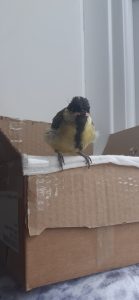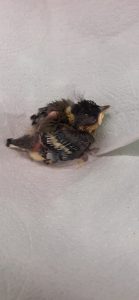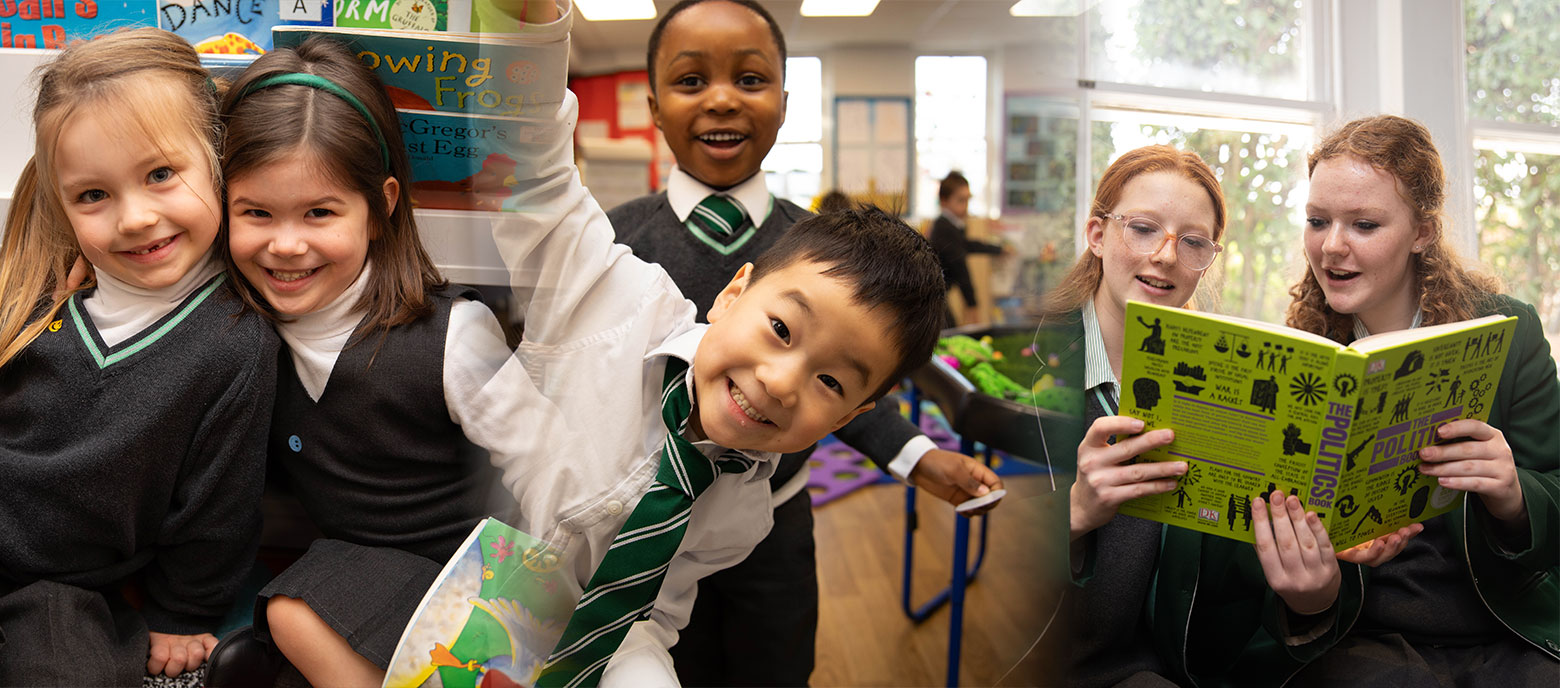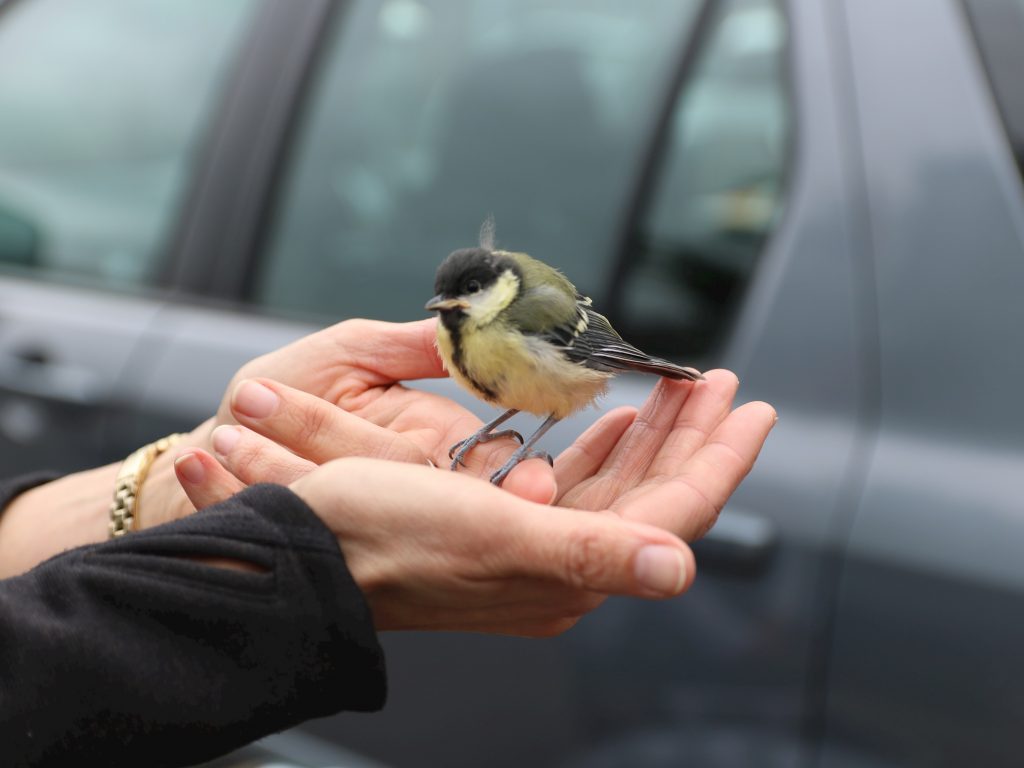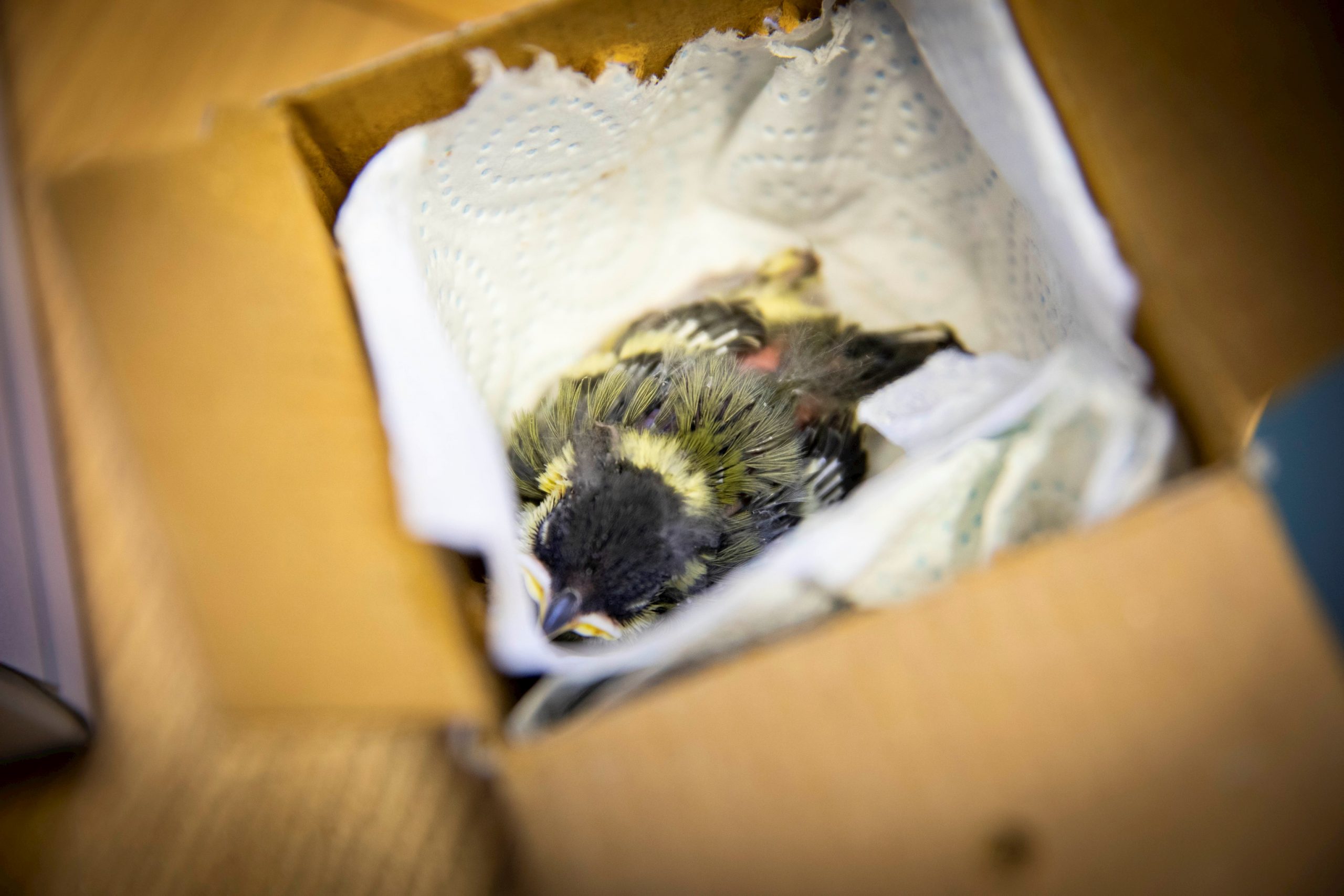The Great Tit is the largest of the UK´s tits. It nests in holes in trees, but is just as happy to use nest boxes. Great tits are active feeders, hunting out insects and spiders among the smaller branches and leaves of trees in woodlands. They are also well-adapted to gardens and towns and will visit bird tables, fighting off other smaller tits to get to the food.
The great tit is a familiar garden bird with a black head, white cheeks, green back, yellow belly and black stripe down its breast. Male great tits have a broad black stripe on the belly, whereas females have a much thinner black stripe.
On Wednesday 16th June, three chicks were taken to the school after a group of pupils found them on the streets (their nest was knocked out and completely destroyed). It was a very hot morning, we were suffering a heat wave that week and the temperature inside the Science prep room that day wasn’t helping, so unfortunately, two of the siblings didn’t make it. However, the remaining chick was very determined to survive.
At the beginning we contacted several organizations and charities that could take care of the baby bird, such as RSPCA or RSPB, but unfortunately no one could help us at that moment, so we decided to research as much as we could on the internet and try to save its life. We soon learnt that any baby bird needs as much protein in its diet as possible and dog or cat food were excellent options, especially wet dog’s kibbles and canned cat’s pate.
Against the odds, our little baby bird not only survived, but also gained strength and seemed to enjoy the food very much. It was always quite hungry and we were advised to feed the baby every 15 minutes for a few days using plastic tweezers until we could start feeding it every 30 minutes.
Everything looked normal and the baby bird was growing more and more feathers and gaining weight. However, a few days later, we faced another big challenge. The chick was developing a spraddle leg because the floor of the nest we built for it was too slippery for the chick to grip, which causes the legs to slide to one side. As a result the chick’s legs muscles don’t develop properly because of the lack of traction. Again, we poured all our hopes into finding a guide to correct this problem before the chick grew more and the best method we found was using stuffing for pillows and toys and building a different nest where the baby bird could keep its legs in a straight position under its body. Problem solved!
A week later, our baby bird was completely full of feathers and developed the characteristic narrow black strip in her belly that told us she was a female great tit. At that point, she started jumping out of her nest and stretching her wings and we also started giving her live mealworms in combination of her favourite dog food. Soon she learned to fly and her favourite game was fly as high as she could to land on people’s heads, a bit scary if you weren’t expecting it!
Three weeks after her arrival, she was strong enough to attempt a soft release for a few hours every day. This is highly important for a wild bird because she needed to get used to smells and noises in her natural environment, how to communicate with other birds and identify possible predators. At first, she was a bit clumsy and broke a couple of feathers, but that is normal in fledglings when they jump from tree to tree. She grew new feathers and became an expert flying around and exploring the school garden. Last Wednesday 7th July, exactly four weeks after she arrived at Surbiton High School, she was completely released into the wild and joined a mixed flock of young birds. We can see them singing early in the morning next to the nursery. Mission accomplished!
